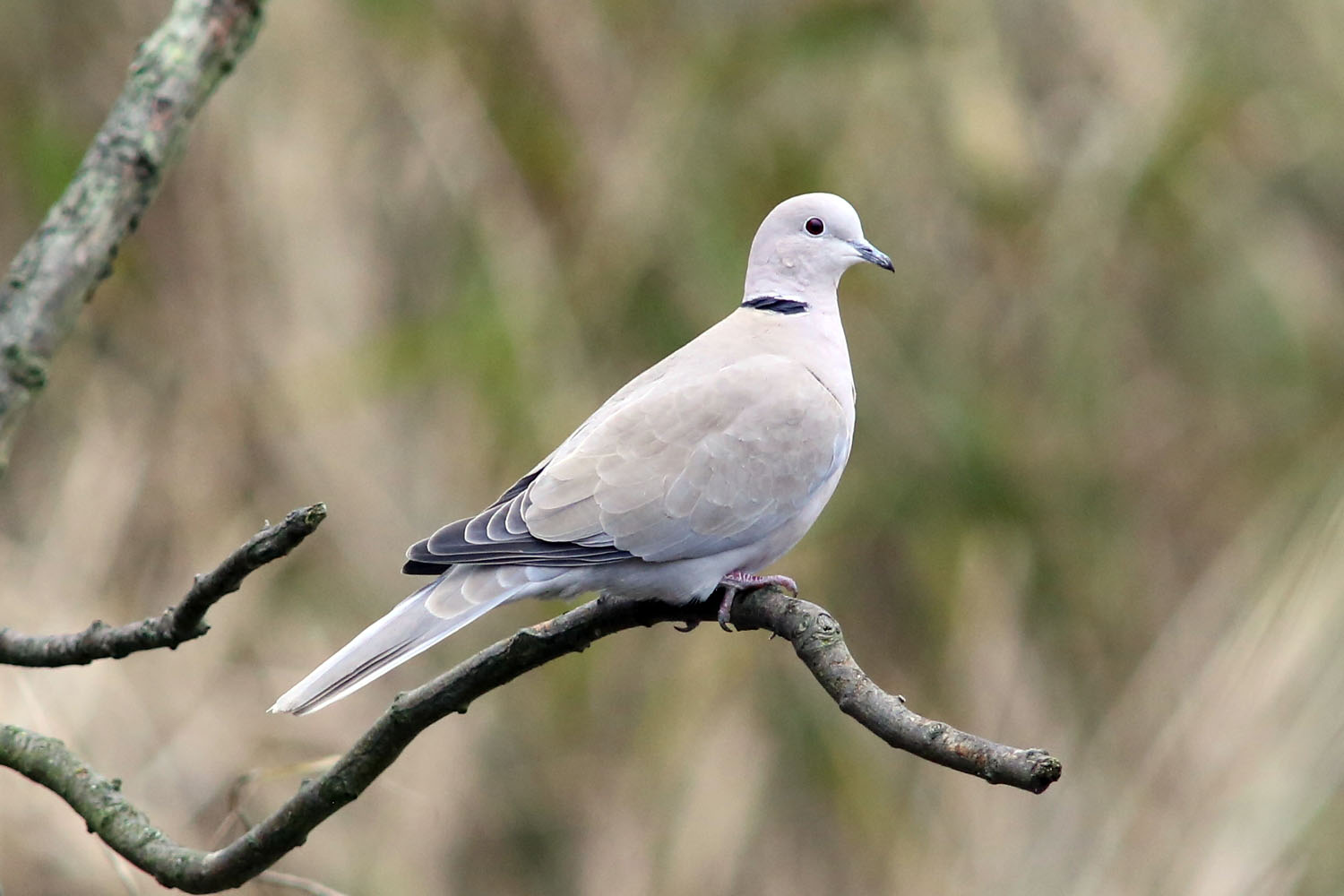
The eye is surrounded by a small area of bare skin, which is either white or yellow. The iris is red, but from a distance the eyes appear to be black, as the pupil is relatively large and only a narrow rim of reddish-brown iris can be seen around the black pupil. The short legs are red and the bill is black. It has a black half-collar edged with white on its nape from which it gets its name. The tail feathers are grey-buff above, and dark grey and tipped white below the outer tail feathers are also tipped whitish above.

It is grey-buff to pinkish-grey overall, a little darker above than below, with a blue-grey underwing patch. The Eurasian collared dove is a medium-sized dove, distinctly smaller than the wood pigeon, similar in length to a rock pigeon but slimmer and longer-tailed, and slightly larger than the related European turtle dove, with an average length of 32 cm (13 in) from tip of beak to tip of tail, with a wingspan of 47–55 cm (19–22 in), and a weight of 125–240 g (4.4–8.5 oz). Thereupon Zeus created this dove that has called out "Deca-octo" ever since. A maid who worked hard for little money was unhappy that she was only paid 18 coins a year and begged the gods to let the world know how little she was rewarded by her mistress. The specific epithet is Greek for "eighteen". The generic name is from the Ancient Greek streptos meaning "collar" and peleia meaning "dove" Identification from the African collared dove is very difficult with silent birds, with the African species being marginally smaller and paler, but the calls are very distinct, a soft purring in the African collared dove quite unlike the Eurasian collared dove's cooing. The Eurasian collared dove is closely related to the Sunda collared dove of Southeast Asia and the African collared dove of Sub-Saharan Africa, forming a superspecies with these. They are now considered junior synonyms of the nominate subspecies ( S. intercedens from southern India and Sri Lanka. stoliczkae from Turkestan in central Asia and S. Two other subspecies were formerly sometimes accepted, S. xanthocycla) was formerly considered a subspecies of the Eurasian collared dove, but was split as a distinct species by the IOC in 2021. It is now placed in genus Streptopelia that was introduced in 1855 by the French ornithologist Charles Lucien Bonaparte.


The type locality is Plovdiv in Bulgaria. The Eurasian collared dove ( Streptopelia decaocto) is a dove species native to Europe and Asia it was introduced to Japan, North America and islands in the Caribbean.Ĭolumba decaocto was the scientific name proposed by the Hungarian naturalist Imre Frivaldszky in 1838 who described a Eurasian collared dove.


 0 kommentar(er)
0 kommentar(er)
